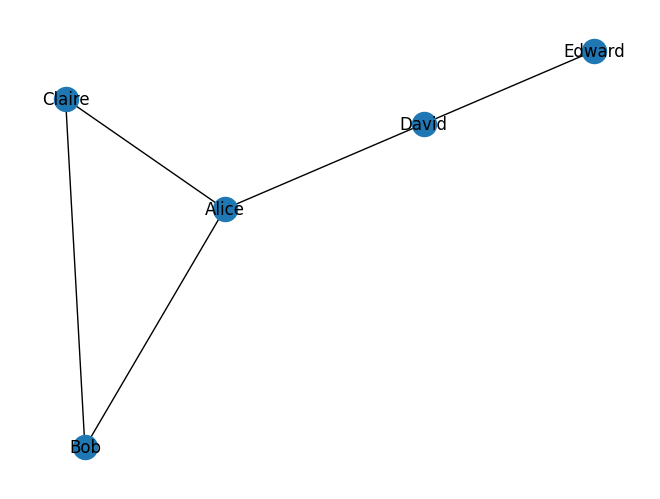Artificial Intelligence (AI) relies heavily on the ability to analyze and visualize complex data relationships. One powerful tool for this task is Gephi, an open-source platform known for its ability to render large networks into digestible insights. Combining Gephi with Python, a language renowned for its versatility and data-processing prowess, enables AI developers to create impactful visualizations, enhance AI models, and unlock deeper insights from data. In this blog, we’ll explore how Gephi can be used in AI applications, with a detailed Python code sample, a look at its pros, industries where it’s used, and how Nivalabs can assist in its implementation.
Why Gephi?
Data is the backbone of machine learning, natural language processing, and predictive analytics. But data alone isn’t enough; making sense of complex datasets often requires network visualization. This is where Gephi excels. Gephi is designed to handle large-scale graphs and networks, making it indispensable for AI projects that rely on visualizing relationships, such as social networks, knowledge graphs, and other connected data.
Key reasons for using Gephi in AI:
- Graph-based Data Visualization: AI systems that use graphs for representing relationships (e.g., social media connections, recommendation engines, knowledge graphs) benefit from Gephi’s graph visualization capabilities.
- Scalability: Gephi efficiently handles large datasets, scaling for AI models involving large-scale network analysis, such as fraud detection and recommendation systems.
- Interactive Exploration: Gephi allows users to explore network data interactively, making it easier to spot anomalies, patterns, and relationships.
- Customization: Gephi’s visualizations can be tailored to specific needs, enabling AI developers to adjust parameters and fine-tune models based on visual insights.
Gephi with Python: Detailed Code Sample for AI
Integrating Gephi with Python unlocks a range of possibilities for AI applications. Python’s network analysis libraries such as NetworkX can be used in tandem with Gephi for visualizing AI models. Here’s how you can use Gephi to visualize an AI-driven network with Python.
Steps for Setting Up:
- Install Necessary Libraries: Make sure you have the required libraries installed.
2. Create a Graph in Python: We’ll generate a simple social network graph using NetworkX, which we’ll later export to Gephi.

3. Export to Gephi: We’ll export the graph to a format that Gephi can import for detailed visualization and analysis.
4. Visualize in Gephi: Open Gephi, import the .gexf file, and explore the network using Gephi’s powerful tools for layout, filtering, and clustering.
This basic example demonstrates how Python-generated data can be visualized using Gephi. For AI applications, similar steps can be applied to visualize data pipelines, neural network architectures, or any other graph-based representation in AI workflows.
Pros of Gephi in AI
1. Handling Large-Scale Networks:
Gephi is optimized for performance, allowing AI practitioners to visualize and analyze networks with millions of nodes and edges. This is critical in industries such as telecommunications, finance, and social media.
2. Interactivity and Customization:
Users can dynamically explore networks, adjusting the parameters of visualizations. This flexibility enables AI teams to discover insights that might not be obvious from raw data.
3. Integration with Other Tools:
Gephi works well with Python libraries like NetworkX and pandas, allowing seamless integration into AI workflows. By leveraging these tools together, teams can combine Gephi’s visualization strength with Python’s data processing power.
4. Open Source and Extensible:
Gephi is an open-source platform with a large community, meaning it’s constantly evolving with new features. Users can also develop plugins to add functionality tailored to their AI models.
Industries Using Gephi with AI
Several industries have adopted Gephi and Python to enhance their AI-driven operations, especially those reliant on network analysis:
- Social Media and Marketing:
Gephi is used to visualize social networks, enabling companies to track user interactions and behaviors, which AI models can analyze to personalize marketing efforts and predict user preferences. - Healthcare:
Medical researchers use Gephi to map out biological networks such as protein interactions or disease spread. AI models can then predict medical conditions or optimize treatments based on these networks. - Cybersecurity:
Gephi helps in visualizing cybersecurity networks to detect fraud, malicious activities, and intrusions. AI models process these networks to predict potential risks and improve security protocols. - Financial Services:
Banks and financial institutions use Gephi to visualize transaction networks to detect patterns of fraud or money laundering. AI-based detection models can spot suspicious activities more efficiently when visualized as networks. - Telecommunications:
In the telecom sector, Gephi is used to visualize call data records and network infrastructure. AI systems can enhance customer experience, optimize network performance, and predict faults by analyzing these complex relationships.
How Nivalabs Can Assist in the Implementation
At Nivalabs, we specialize in helping businesses leverage powerful tools like Gephi and Python to enhance AI systems. Whether you’re building an AI-based recommendation engine, working on social network analysis, or dealing with large-scale biological or financial networks, our expertise can accelerate your project.
Our services include:
- Customized AI-Powered Network Visualizations: We help integrate Gephi into your AI workflows for real-time network insights.
- Data Processing Pipelines: Our team ensures seamless data handling, ensuring Gephi and Python work together to create impactful visualizations.
- Graph-Based AI Model Development: We design and implement AI models that take full advantage of network data, using Gephi to visualize model outputs and optimize predictions.
- Training and Support: We provide training on Gephi and its integration with Python for AI development teams, ensuring you’re equipped to maintain and grow your solutions.
References
Conclusion
Gephi is an invaluable tool for AI practitioners working with complex, large-scale networks. Its visualization capabilities, when combined with Python, can help unlock hidden insights in data and improve AI model performance. Whether you’re dealing with social networks, biological systems, or fraud detection, Gephi and Python provide a powerful duo for enhancing AI applications. Nivalabs can assist in making this integration smooth and effective, ensuring your AI systems make the most of Gephi’s visual power.

